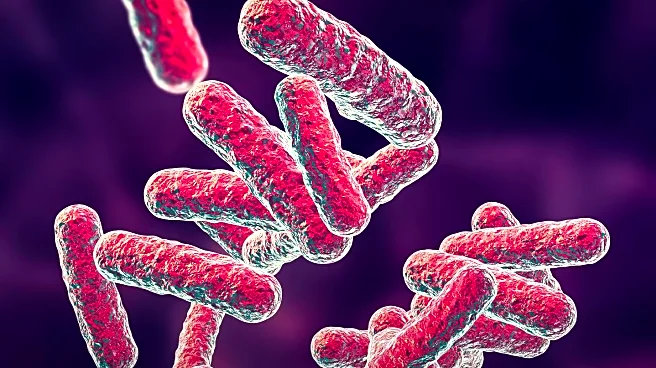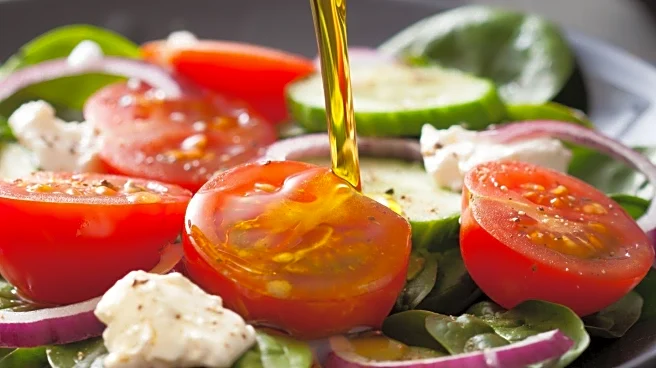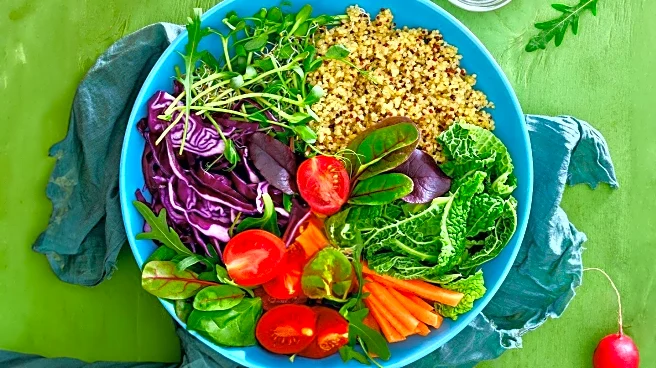What is the story about?
What's Happening?
A recent study has highlighted the potential of resistant starch, a type of dietary fiber, in reducing liver fat by up to 50% in individuals with non-alcoholic fatty liver disease (NAFLD). Conducted by a multinational team from Sun Yat-sen University, the University of Helsinki, and the University of Leipzig, the study involved 200 participants over four months. Participants consuming resistant starch showed significant improvements in liver function markers and a reduction in liver fat, as confirmed by imaging and biopsies. Resistant starch acts as a prebiotic, nourishing beneficial gut bacteria and producing anti-inflammatory compounds, which are crucial for reversing fatty liver disease.
Why It's Important?
NAFLD is a growing health concern, affecting nearly one-third of the global population. The condition is linked to poor dietary habits and can progress to more severe liver diseases if untreated. The study's findings suggest that dietary interventions targeting the gut microbiome could offer a non-invasive, natural approach to managing liver health. This could have significant implications for public health, potentially reducing the burden on healthcare systems and offering a cost-effective strategy for individuals at risk of liver disease.
What's Next?
The study encourages further research into dietary interventions for liver health and the role of the gut microbiome. Healthcare providers may consider recommending resistant starch-rich foods as part of a comprehensive approach to managing NAFLD. Patients are advised to consult healthcare professionals before making significant dietary changes, especially if underlying health issues are present.
Beyond the Headlines
The study underscores the interconnectedness of gut and liver health, highlighting the potential of dietary fibers in modulating the gut microbiome. This could pave the way for new dietary guidelines and public health policies focused on preventive care and lifestyle modifications.
AI Generated Content
Do you find this article useful?













